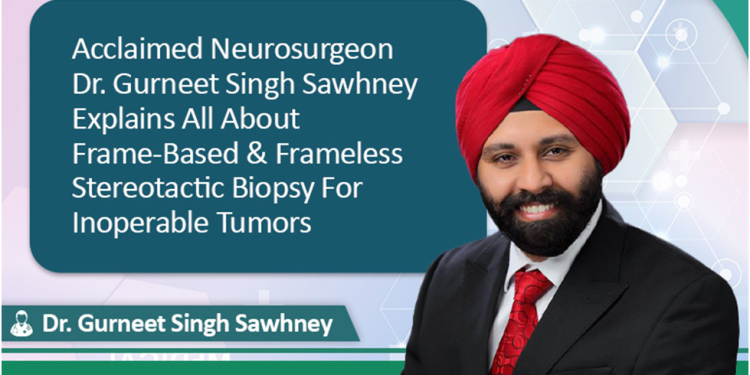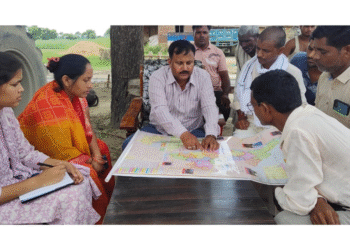Treatment of inoperable brain tumors is challenging for neurosurgeons as they cannot be removed through surgery as they could be located near a vital structure or impossible to reach. Inoperable tumors are also called unresectable tumors. Therefore, in-depth diagnosis and evaluation, including a biopsy, is a must for inoperable tumors to decide on the future course of treatment.
Currently, most neurosurgeons prefer stereotactic biopsy for inoperable tumors. Dr Gurneet Singh Sawhney, a leading neurosurgeon in Mumbai and Senior Consultant and HOD of Neurosurgery, at Fortis Hospital, Mumbai, states, ‘There are two methods to perform a stereotactic biopsy viz, with Frame or frameless. Moreover, stereotactic biopsies offer a definitive diagnosis of more than 95%, so I prefer to rely on them before treating the inoperable tumors.’
He explains that in this biopsy, the neurosurgeon inserts a thin needle in the brain to remove a small piece of the tissue for further examination. He further explains that the neurosurgeon decides whether to proceed with a frame or a frameless biopsy, depending on the size and location of the tumor.
The Frameless-based stereotactic biopsy requires a special CT scan or MRI done a couple of days before the biopsy. The image so received is imported through special software to get a 3-dimensional image of the brain and the targeted location within the operation theatre. The operating neurosurgeon and the team refer to this image along with the guidance arm to insert the needle correctly in the targeted tumor location for biopsy purposes.
On the other hand, a Frame-based biopsy procedure involves using a stereotactic frame to the patient’s head, followed by a CT scan or MRI using an image guidance system. The Frame guides the biopsy needle to access the small targets or those located deep within the brain. Irrespective of the approach, both are safe and promise successful outcomes.
In both these procedures, a needle is entered through a small incision made in the skull. After the procedure, the needle is removed and a suture or a staple is used to close the incision. The procedure is performed under sedation or general anaesthesia but not unconscious.
Patients can recover fast and well from a stereotactic brain biopsy. The bandages are removed the next day, and after an observation period or an overnight stay, the patient is discharged. Patients can resume normal activities within a couple of days.
Dr Gurneet Singh Sawhney reassures that a stereotactic biopsy is very safe, with approximately a 1% risk of intracranial haemorrhage or infection or unsuccessful attempt to obtain the tissue. Hence, choosing the right expert and experienced neurosurgeon is very critical. The neurosurgeon plans the entire biopsy procedure in detail. Also, with the latest software and specialized equipment, it is possible to get the required tissue of the tumor and a clear picture of the inoperable tumor.
Dr Gurneet Singh Sawhney is a highly dedicated and experienced neurosurgeon in Mumbai. He is well recognized for his capabilities in successfully treating complicated cases and neurosurgeries across patients of all ages. In addition, he is conversant in English and many regional languages, making patients feel at ease during their consultation and treatment.
Dr Gurneet Singh Sawhney is available for consultation at Fortis Hospital, Mulund, and at Neurolife Brain & Spine Clinic, his private clinic at Mulund, Mumbai. He is also available at Savla Diagnostic Center and Polyclinic, Chembur and Baba Jeewan Singh Ji Memorial Medical Centre (Charitable) at Sion, Koliwada, Mumbai. He can be reached at gurneetsawhney@gmail.com and +91 8104310753.













